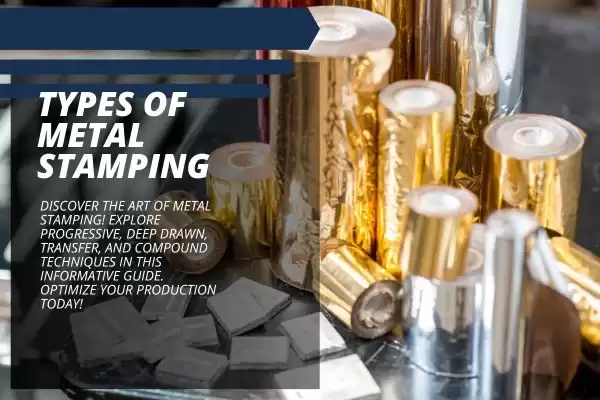
Sep 21,2023
Metal stamping is a fundamental process in modern manufacturing, enabling the production of intricate metal components used in various industries. Understanding the different types of metal stamping techniques is crucial for engineers and manufacturers looking to optimize production efficiency and quality. In this article, we'll delve into the four primary types of metal stamping: Progressive Die Stamping, Deep Drawn Stamping, Transfer Die Stamping, and Compound Die Stamping.
Progressive die stamping is a highly efficient and versatile method widely employed in industries where high-volume production of complex parts is required. This process involves feeding a metal strip through a series of dies, each successive die performing a specific operation. As the strip advances, multiple operations are carried out seamlessly and continuously.
This method offers several advantages: high-speed production, cost-effectiveness, and consistent precision. It's a favored choice for the automotive, electronics, and appliances industries. For example, the intricate components of a car's transmission system are often produced using progressive die stamping due to its ability to maintain tight tolerances over large production runs.
Deep-drawn stamping is a specialized technique to create three-dimensional shapes from flat sheet metal. Unlike progressive die stamping, deep-drawn stamping involves a single die that forms the metal into the desired shape through a series of operations. This process is particularly well-suited for manufacturing parts with high depth-to-diameter ratios.
The advantages of deep-drawn stamping lie in its ability to create complex, seamless components with minimal material waste. This makes it famous for producing household appliances, aerospace components, and medical equipment. For instance, the stainless steel bowls in a mixer or the casing of a pressure vessel often undergo deep-drawn stamping to achieve their final form.
Transfer die stamping bridges the gap between progressive and individual operation stamping. In this process, a transfer press carries the metal strip from one station to the next, allowing multiple operations to be performed at distinct locations. This method is beneficial for parts that require precision in specific areas while allowing for flexibility in others.
The benefits of transfer die stamping include reduced material waste, enhanced control over critical dimensions, and the ability to produce complex components. Industries like aerospace, electronics, and power generation rely on this method for producing components such as connectors, brackets, and contacts.
Compound die stamping combines simplicity with efficiency. It involves a single die that performs multiple operations in a single stroke, making it an excellent choice for producing components with relatively simple geometries. Compound die stamping is especially advantageous for projects with lower production volumes or for prototypes.
This method excels in producing parts like washers, brackets, and clips. While it may not be as suitable for high-volume production as progressive die stamping, its versatility and cost-effectiveness make it an attractive option for smaller-scale projects.
Selecting the appropriate metal stamping technique is crucial for achieving optimal results. Factors such as production volume, component complexity, and material type should all be considered. Collaborating with a reputable metal stamping partner who understands these processes can provide valuable insights and expertise.
In conclusion, metal stamping is pivotal in modern manufacturing across various industries. Understanding the four primary types—Progressive Die Stamping, Deep Drawn Stamping, Transfer Die Stamping, and Compound Die Stamping—gives engineers and manufacturers the knowledge needed to select the most suitable method for their specific projects. By leveraging the strengths of each technique, businesses can achieve precision, efficiency, and cost-effectiveness in their production processes.